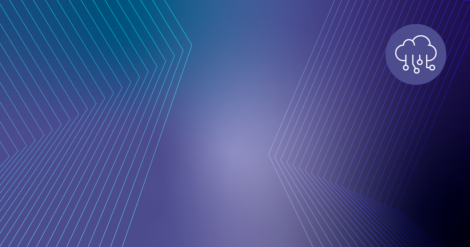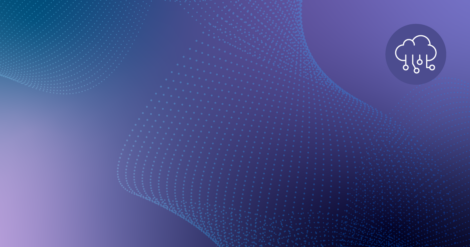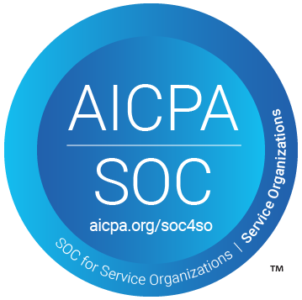If there’s one thing today’s economy values, it’s speed. To enable faster decisions, businesses are rapidly moving data to the cloud, building powerful AI-driven applications, and increasingly relying on operational analytics. These initiatives all depend on one thing: a constant, reliable stream of real-time data.
But many organizations struggle to deliver real-time data; their data strategies are stuck in the past. Traditional data movement, built on slow, scheduled batch jobs (ETL), simply can’t keep up with the industry’s need for speed. This legacy approach creates data latency, leaving decision-makers with stale information and preventing applications from responding to events as they happen.
Sound familiar? Perhaps you already know the consequences of stale data. When you can’t get data when you need it, you risk missing key opportunities, creating inefficiencies, and widening the gap between data and its potential value.
This is where Oracle Change Data Capture (CDC) comes in. CDC offers a powerful and efficient way to capture every insert, update, and delete from your critical Oracle databases in real time. When implemented correctly, it can become the engine for modern, event-driven data architectures. But without the right strategy and tools, navigating the complexities of Oracle CDC can be challenging.
This guide will provide a clear roadmap to mastering Oracle CDC. We’ll explore what it is, how it works, and how to choose the right approach for your business—transforming your data infrastructure from a slow-moving liability into a real-time strategic asset.
What is Oracle Change Data Capture?
Oracle Change Data Capture (CDC) is a technology designed to identify and capture changes made to data in an Oracle database. It can capture DML (INSERT, UPDATE, and DELETE), DDL (CREATE, ALTER, DROP, and TRUNCATE) changes in your database the moment they occur. Think of it as a surveillance system for your data, noting every single modification in real time. This is about building infrastructure that can understand and react to new events. By tracking changes as they happen, CDC provides a continuous stream of change events that form the foundation of a responsive data strategy. This capability is essential for businesses that need to power streaming analytics, execute seamless cloud migrations with zero downtime, and build sophisticated, event-driven AI applications that rely on the freshest data possible.
Common Use Cases for Oracle Change Data Capture
At its best, Oracle CDC doesn’t just move data; it enables better outcomes. By providing a real-time stream of changes, CDC unlocks new capabilities for companies of all sizes, from agile startups to large enterprises across finance, retail, manufacturing, and more.
Cloud Migration and Adoption
For any company moving its Oracle workloads to the cloud, minimizing downtime is critical. Oracle CDC facilitates zero-downtime migrations by continuously syncing the on-premises source database with the new cloud target. This allows for a phased, low-risk cutover, ensuring business operations are never disrupted.
Streaming Data Pipelines for Analytics and AI
Advanced analytics and AI applications thrive on fresh data. CDC is the engine that feeds real-time data from Oracle databases into cloud data warehouses like Snowflake, Google BigQuery, and Databricks, or into streaming platforms like Apache Kafka. This allows data science teams to build dashboards with up-to-the-second accuracy and train machine learning models on the most current dataset available.
Offloading Operational Reporting and Upstream Analytics
Running heavy analytical queries against a live production (OLTP) database can degrade its performance, impacting core business applications. CDC allows companies to replicate transactional data to a secondary database or another backup storage option in real time. This offloads the reporting workload, ensuring that intensive analytics don’t slow down critical operational systems.
Event-Driven Application Development and Platform Modernization
In event-driven architecture, services communicate by reacting to events as they happen. Oracle CDC turns database changes into a stream of events. For example, a new entry in an orders table can trigger a notification to the shipping department, update inventory levels, and alert the customer, all in real time. This is invaluable for industries like e-commerce and logistics that need to automate complex workflows.
Disaster Recovery and High Availability
For mission-critical systems, maintaining a real-time, up-to-date replica of a production database is essential for disaster recovery. Oracle CDC ensures that a standby database is always in sync with the primary system. In the event of an outage, the business can failover to the replica with minimal data loss and disruption.
Data Synchronization Across Systems
Enterprises often have multiple systems that need a consistent view of the same data. Whether it’s keeping a CRM and an ERP system in sync or ensuring data consistency across geographically distributed databases, CDC is a reliable solution for real-time data synchronization, eliminating data silos and inconsistencies before they spring up.
Regulatory Compliance and Audit Readiness
For industries with strict regulatory requirements, like finance and healthcare, maintaining a detailed audit trail of all data changes is non-negotiable. Oracle CDC provides an immutable, chronological log of every insert, update, and delete. This creates a reliable audit history that can be used to ensure compliance and simplify audit processes.
AI Enablement
When it comes to getting AI-ready, enterprises need the freshest data available to fuel AI models with relevant insights. Real-time CDC ensures AI applications get the most up-to-date insights to power RAG engines with continuous, accurate updates. The result: faster, smarter, more responsive AI outputs based on relevant business contexts.
How Oracle Change Data Capture Works
Unlike systems that repeatedly poll tables for changes—an approach that is both inefficient and resource-intensive—Change Data Capture (CDC) taps directly into Oracle’s internal mechanisms. The most robust and performant CDC methods leverage Oracle’s transaction logs to capture changes with minimal impact on the source system. At the core of this process are Oracle redo logs. Every data-modifying transaction—whether an insert, update, or delete—is first recorded in a redo log file. This built-in mechanism ensures data integrity and supports recovery in the event of a system failure. Once redo logs reach capacity, they are archived into archive logs for persistence and historical tracking. Log-based CDC tools like Striim connect to the database and “mine” these redo and archive logs in a non-intrusive way. Striim offers two Oracle CDC adapters:
- LogMiner-based Oracle Reader – Uses an Oracle LogMiner session to scan and capture server-side changes.
- OJet Adapter – A high-performance, API-driven solution designed for large-scale, real-time data capture.
Both approaches are highly efficient and have minimal overhead, preserving the performance and stability of the source database. Learn more about Striim’s Oracle CDC adapters here.
Simple Oracle CDC Flow:
- Transaction Occurs: An application performs an INSERT, UPDATE, or DELETE or a DDL change on an Oracle database table.
- Log Write: Oracle writes the change to its redo log.
- CDC Capture: A CDC tool (like Striim) reads the change from the redo log in real time.
- Stream Processing (Optional): The data can be transformed, filtered, or enriched in-flight.
- Data Delivery: The processed data is delivered to the target (e.g., Snowflake, Kafka, BigQuery).
Methods of Implementing CDC in Oracle
There are multiple ways to implement CDC in Oracle, each with its own trade-offs in performance, complexity, and cost. There’s no one “correct” method to choose—it comes down to selecting the approach that best matches the needs of your data management strategy and business goals.
Log-Based CDC
Reads changes directly from Oracle redo/archive logs. The gold standard for high-performance, low-latency pipelines where source performance is critical.
Trigger-Based CDC
Uses database triggers on each table to write changes to audit tables. Best for low-volume tables or when log access is restricted.
Oracle GoldenGate
Oracle's proprietary log-reading replication software. Ideal for enterprise Oracle-to-Oracle replication with a large budget.
Oracle Native CDC
DeprecatedA built-in feature in older Oracle versions using triggers and system objects. It is no longer supported and should not be used for new projects.
Log-Based Oracle API CDC
The gold standard for high-performance Oracle CDC leverages Oracle’s native APIs to capture changes directly from Logical Change Records (LCRs)—Oracle’s internal representation of both DML (INSERT, UPDATE, DELETE) and DDL (CREATE, ALTER, DROP) operations. These records are derived from the database’s redo logs, offering a highly accurate, low-latency stream of transactional and structural changes. Because this method uses the same internal mechanisms Oracle relies on for replication and recovery, it ensures minimal performance impact on the source system. However, interacting directly with LCRs and Oracle’s APIs can be complex and requires advanced database knowledge. Striim simplify this by providing a fully managed, Oracle-integrated CDC solution that captures both data and schema changes in real time—without the need for extensive manual configuration.Trigger-Based CDC
This approach involves placing database triggers on each source table. When a row is inserted, updated, or deleted, the trigger fires and copies the change into a separate “shadow” or audit table. While conceptually simple, this method adds significant overhead to the production database, as every transaction now requires an additional write operation. This can slow down applications and become a major performance bottleneck, especially in high-throughput environments. It’s also difficult to maintain as the number of tables grows.Oracle GoldenGate
Oracle GoldenGate is a premium, feature-rich data replication solution known for its deep integration with the Oracle database and its ability to support high-volume, low-latency replication. While it excels in large-scale, mission-critical environments—particularly for Oracle-to-Oracle replication—its complexity and high licensing costs can be a barrier for many organizations. Striim offers a unique advantage by allowing customers to leverage existing GoldenGate trail files without requiring a full GoldenGate deployment. This capability enables organizations to preserve their investment in GoldenGate infrastructure while using Striim’s modern, flexible platform for real-time data integration, transformation, and delivery. Striim is one of the few solutions on the market that can read GoldenGate trail files directly, providing a cost-effective and simplified alternative for operationalizing data across diverse targets like Snowflake, BigQuery, Kafka, and more.Oracle Native LogMiner
Oracle previously offered a built-in feature called Continuous Mine Mode to support Change Data Capture (CDC) in earlier versions of its database. However, this mode was complex, less performant than modern alternatives, and has been deprecated starting with Oracle 19c. While CONTINUOUS_MINE is no longer supported, LogMiner remains fully functional and officially supported by Oracle. LogMiner traditionally reads redo and archived redo logs to extract transactional changes, enabling real-time CDC. However, with the deprecation of Continuous Mine Mode, organizations have sought more efficient and forward-compatible solutions. To meet this need, Striim introduced Active Log Mining Mode (ALM)—a high-performance, real-time CDC capability built for Oracle 19c and beyond. ALM enables Striim to efficiently mine redo and archive logs without relying on deprecated features, ensuring low-latency, uninterrupted CDC across supported Oracle versions. For organizations seeking a future-proof CDC solution, Striim also offers Oracle OJET—an API-based integration that reads Logical Change Records (LCRs) directly from Oracle. OJET is Oracle’s strategic path forward for CDC, providing robust, enterprise-grade replication with long-term compatibility and official support.Choosing the Right Oracle CDC Approach
To choose the right CDC method, you’ll need to align your technical strategy with your business goals, budget, and scalability needs. Striim has developed two CDC adapters for integrating data from Oracle. The first one is an Oracle Reader that captures CDC data using the LogMiner session on the server side. The second is the OJet adapter that uses a high-performing logmining API and offers the best performance for high-scale workloads. To learn more, check out this performance study which demonstrates the advantages of each adapter option.The Benefits of Using Oracle CDC
When implemented with a clear strategy, Oracle CDC offers transformational benefits that go far beyond simple data replication. It empowers organizations to:- Enable real-time operational visibility for faster decision-making. By streaming every transaction, CDC provides an up-to-the-second view of business operations. This allows leaders to monitor KPIs, detect anomalies, and react to market changes instantly, rather than waiting for end-of-day reports.
- Support phased and zero-downtime cloud migrations. CDC de-risks one of the most challenging aspects of cloud adoption: data downtime. By keeping on-premises and cloud databases perfectly in sync, businesses can migrate at their own pace without service interruptions, ensuring a smooth and seamless transition.
- Streamline data ingestion for analytics, AI, and customer personalization. Feeding fresh, granular data to analytical systems is crucial for competitive advantage. CDC provides a continuous, low-latency stream of data that powers everything from dynamic pricing models and fraud detection algorithms to hyper-personalized customer experiences.
Challenges and Limitations of Change Data Capture
While Oracle CDC is a powerful way to get fresh data into downstream tools and systems, a poorly planned implementation can be risky and hugely costly. Without the right platform and strategy, data teams can run into several major challenges.Performance Overhead on Source Systems
The Challenge: Trigger-based CDC or inefficient log-mining can place a heavy burden on production OLTP systems, slowing down the applications that the business depends on. This is especially damaging for startups and scaling companies with resource-constrained databases.
How Striim Helps: Striim uses a highly optimized, agentless, log-based CDC method on the source database, ensuring production workloads are not compromised. Striim also supports reading from Oracle ADG (Active Data Guard) or other downstream databases to minimize impact on the primary database.
Complexity of Managing Schema Changes
The Challenge: When the structure of a source table changes (e.g., a new column is added), it’s known as schema drift. These DDL changes can easily break data pipelines, forcing teams to manually intervene to resynchronize systems. This is a common struggle for mid-size and enterprise teams managing evolving applications.
How Striim Helps: Striim offers built-in, automated schema migration services and schema evolution capabilities that automatically detect and propagate schema changes from data source to target, ensuring pipelines remain resilient and data stays in sync without manual effort.
High Licensing and Operational Costs
The Challenge: Native Oracle solutions like GoldenGate come with a hefty price tag, adding a significant licensing burden to any project. This can be a major roadblock for enterprises looking to control the costs of their initiatives.
How Striim Helps: Striim provides a cost-effective solution with scalable pricing and cloud-native architecture, reducing the total cost of ownership (TCO) for real-time data integration.
Lack of Real-Time Observability and Alerting
The Challenge: Many traditional CDC solutions are “black boxes.” Teams often don’t know a pipeline has failed until a downstream report is broken or a user complains about stale data. This is particularly painful for lean IT teams and cloud-first startups that can’t afford to spend hours troubleshooting.
How Striim Helps: Striim provides comprehensive, real-time monitoring dashboards, data validation, and proactive alerting. This gives teams end-to-end observability into their data pipelines, allowing them to identify and resolve issues before they impact the business.
Real-Time AI Model Enablement on Live Enterprise Data Streams
The Challenge: Businesses struggle to apply AI in real time because traditional methods rely on batch processing and siloed systems, causing delays in detecting sensitive data, anomalies, or insights. Integrating AI directly into live data streams to enable instant action remains a complex problem.
How Striim Helps: Striim offers highly performant AI agents that embed advanced AI capabilities directly into streaming pipelines, enabling real-time intelligence and automation:
-
- Sherlock AI: Uses large language models to classify and tag sensitive fields on-the-fly.
- Sentinel AI: Detects and protects sensitive data in real time within streaming applications.
- Euclid: Enables semantic search and categorization through vector embeddings for deeper analysis.
- Foreseer: Provides real-time anomaly detection and time series forecasting for predictive monitoring.
By integrating these AI agents seamlessly, Striim empowers organizations to operationalize AI-driven insights instantly, improve data privacy, detect risks early, and make faster, smarter decisions.
Simplify Oracle Change Data Capture With Striim
When it comes to moving data from Oracle systems, Oracle CDC is a trusted approach—but building and managing reliable, scalable pipelines without the right platform is complex, risky, and costly. Manual infrastructure and legacy tools often introduce delays and budget overruns, putting projects at risk before they even start. Striim streamlines Oracle CDC with a comprehensive, agentless platform designed for high-throughput, real-time data integration. Optimized for modern cloud environments, Striim enables you to:- Deliver data with sub-second latency using best-in-class, log-based CDC.
- Process and transform data on the fly through a powerful SQL-based streaming analytics engine.
- Achieve enterprise-grade observability with real-time monitoring, alerting, and data validation.
- Securely connect to any cloud platform with extensive, pre-built, scalable integrations.
- Get an interactive demo of Striim.
- See how Striim compares to other real-time streaming platforms in GigaOm’s latest radar report.
- Explore Striim recipes in GitHub.
- Download the Benchmark Study Oracle Reader and OJET to BigQuery




